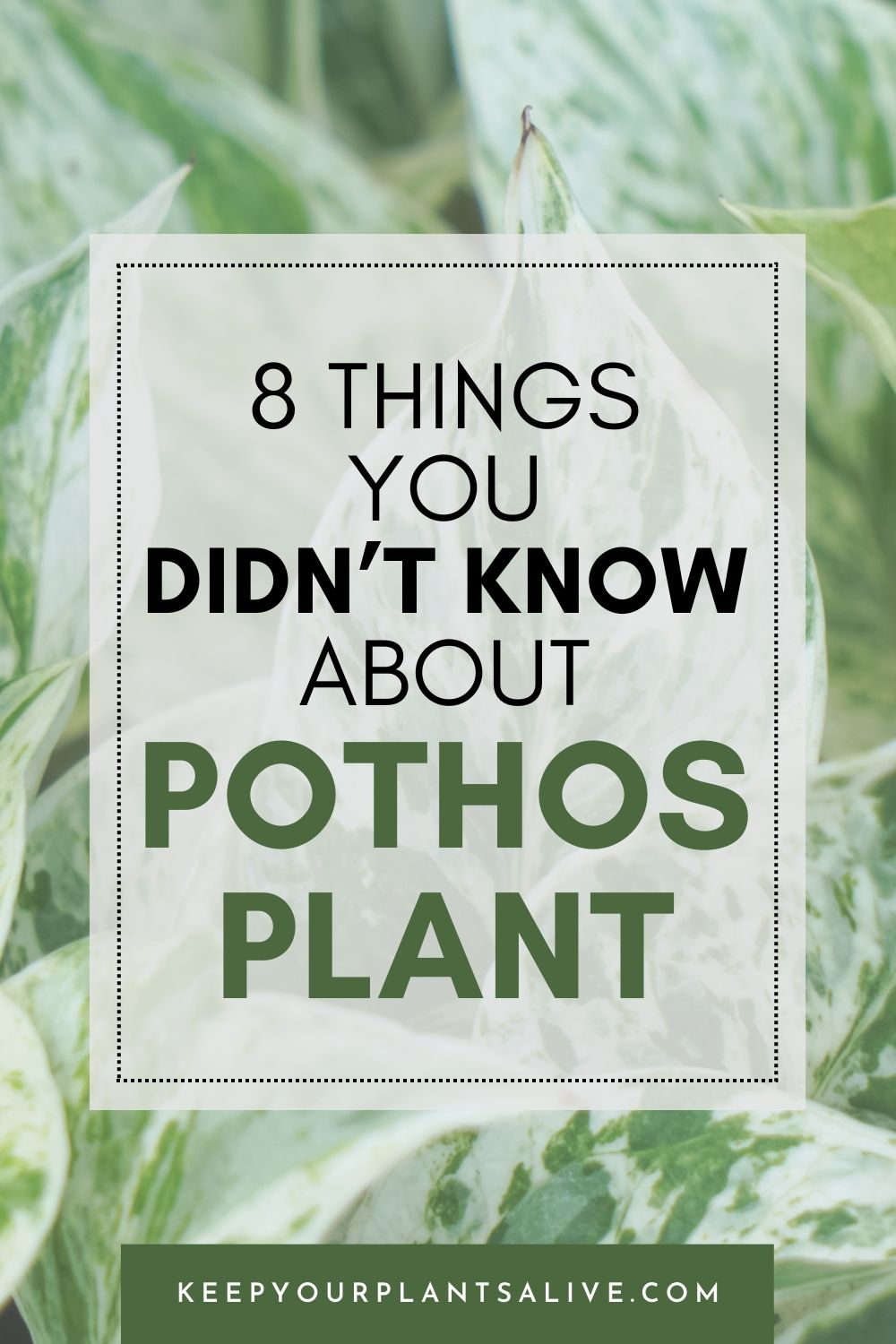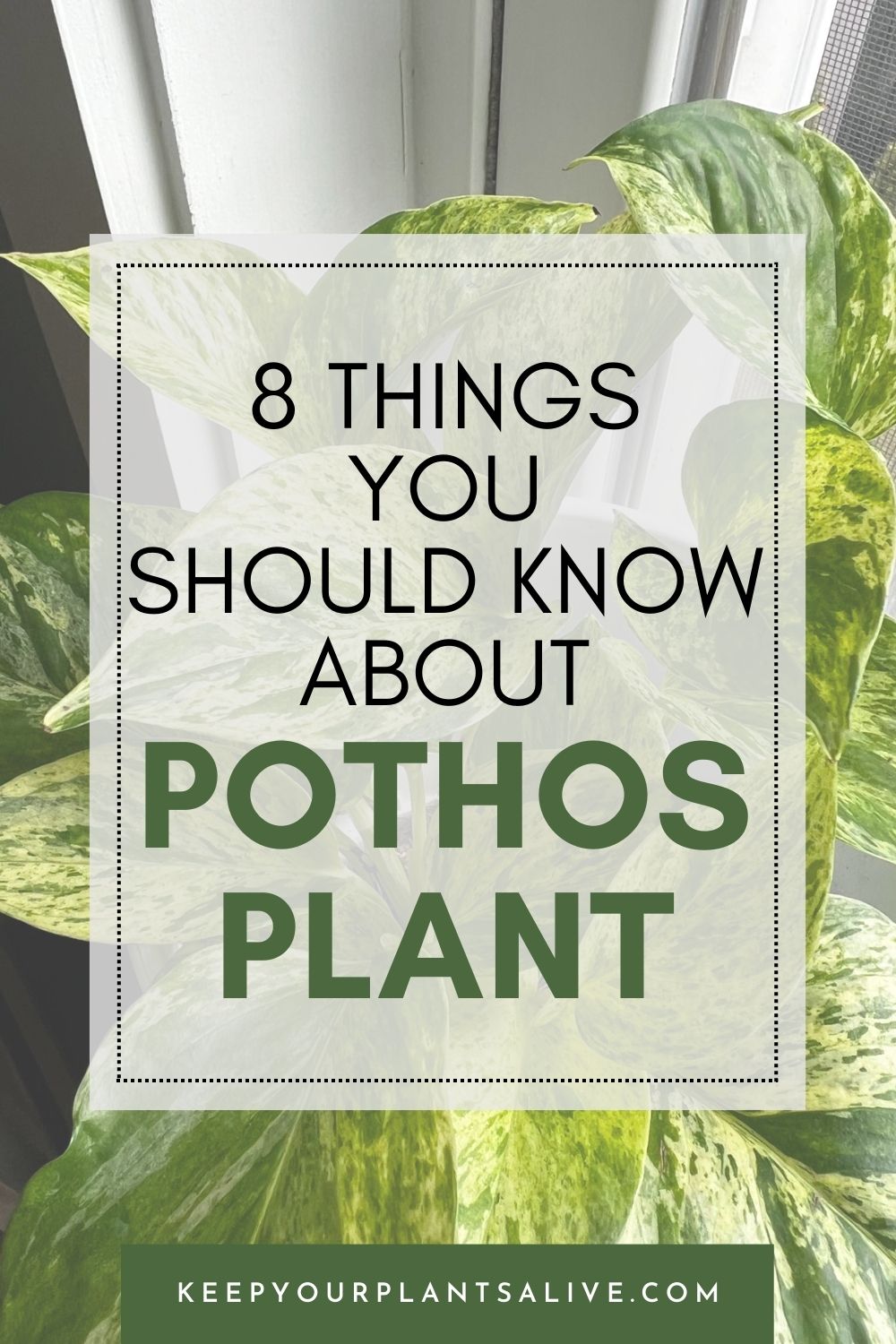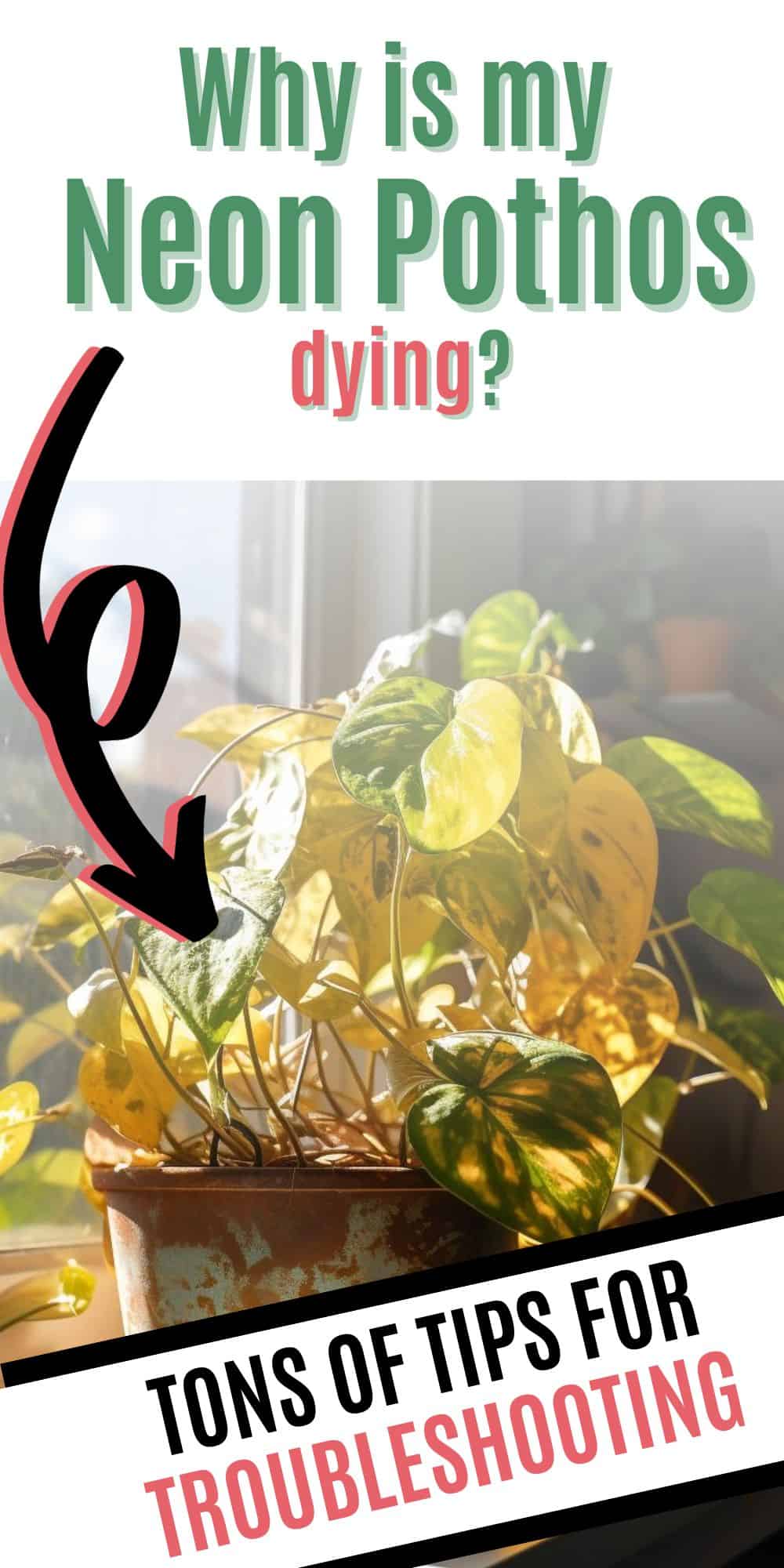Want to master pothos plant care? It starts from the dirt up! Here's what you need to know about the best soil mix for pothos plants!
Pothos is one of the most popular houseplants. And for a good reason - these lush green plants can be grown with long hanging vines, or climbing a trellis. They come in a ton of varieties and are easy to care for even without a ton of light or frequent watering.
One aspect of your pothos care that you might not immediately think about is the soil!
The soil is where your houseplants pull all of their nutrients from and is a super important part of your overall pothos health.
Today we want to chat about picking the ideal soil mix for your pothos plant, including aeration, drainage, and nutrient content!
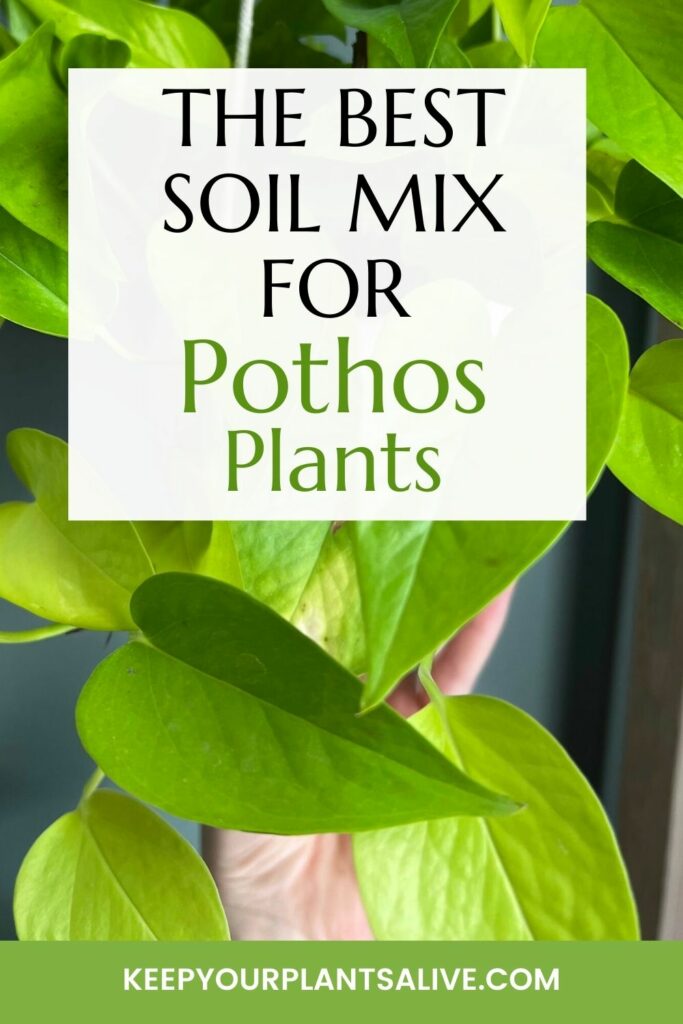
Understanding Pothos Soil Needs
Pothos (Epipremnum aureum), native to the tropical regions of Southeast Asia, the Solomon Islands, and parts of Australia, thrives in lush, humid environments. In its natural habitat, pothos can be found climbing trees and rocks, often growing in the rich, well-draining soil of tropical rainforests.
These regions are characterized by warm temperatures, high humidity, and regular rainfall, creating an ideal environment for pothos to flourish.
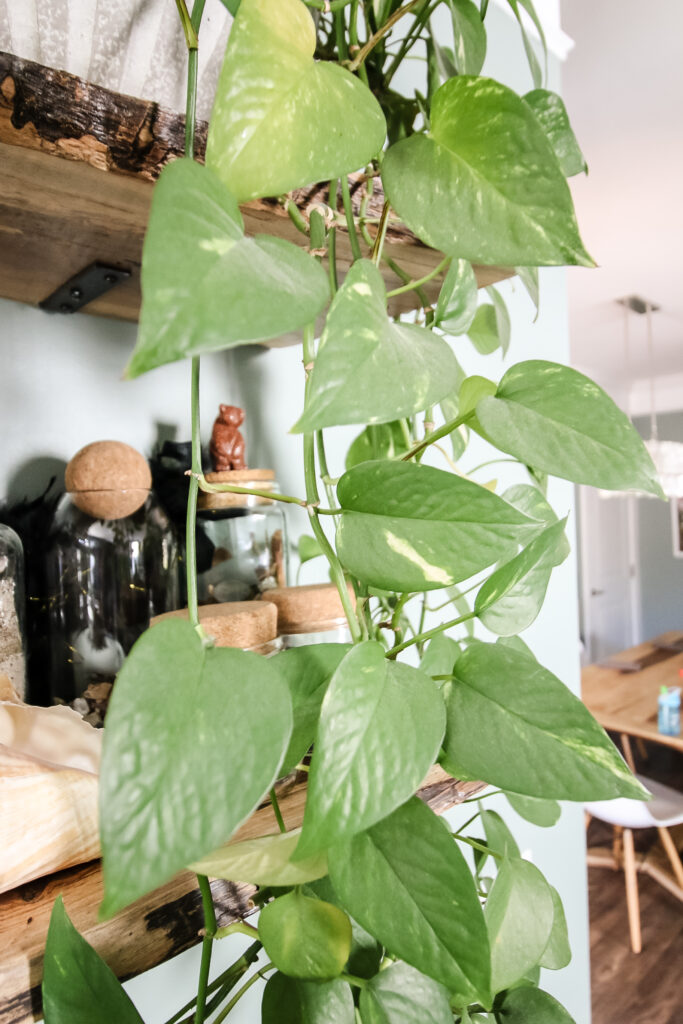
The Role of Soil in Pothos Growth
Soil plays a crucial role in the life of pothos plants, serving as the foundation for stability, a source of essential nutrients, and a medium for aeration.
Here's how soil contributes to the well-being of pothos:
Stability: The soil provides structural support to the plant, anchoring its roots securely. In the wild, pothos vines use their roots to cling to trees and rocks, ensuring stability as they climb and spread.
Nutrient Supply: Soil acts as a reservoir for essential nutrients like nitrogen, phosphorus, and potassium. Pothos relies on these nutrients to fuel its growth, develop new leaves, and maintain overall health. These nutrients are often naturally available in the soil or are supplemented through organic decomposition and microbial activity.
Aeration: Well-draining soil allows air to reach the roots. Oxygen is vital for the respiration process in plant roots, facilitating the conversion of nutrients into energy. Adequate aeration ensures that the root system remains healthy and prevents issues related to oxygen deprivation.

Consequences of Inappropriate Soil Mixes
Using inappropriate soil mixes can have detrimental effects on the health of pothos plants. In tropical regions, where these plants naturally thrive, the consequences of poor soil conditions can be severe:
Waterlogged Roots: If the soil mix lacks proper drainage, excess water can accumulate around the roots, leading to waterlogged conditions. Waterlogged roots can suffocate due to the lack of oxygen, causing root rot, stunted growth, and wilting leaves.
Inadequate Aeration: Compacted or dense soils restrict airflow to the roots, leading to inadequate aeration. This lack of oxygen affects nutrient uptake and can weaken the plant, making it susceptible to diseases and pest infestations.
Nutrient Imbalance: Soil lacking essential nutrients or imbalanced in its nutrient composition can result in nutrient deficiencies or toxicities. This imbalance can result in discolored leaves, poor growth, and overall plant decline.
A balance of stability, nutrients, and aeration is essential for maintaining healthy pothos plants, ensuring they thrive and exhibit their characteristic lush foliage in indoor and outdoor settings.

Best Soil Mix for Pothos: Key Components
The essential components of an ideal pothos soil mix include peat moss, perlite, coconut coir, and a well-balanced potting mix. You can mix these elements to create your own soil mix.
A commonly used ratio for a well-draining and nutrient-rich pothos soil mix is:
- 1 part Peat Moss
- 1 part Perlite
- 1 part Coconut Coir
- 1 part Well-Balanced Potting Mix
Well-Balanced Potting Mix
A general potting mix is a great base for your pothos soil. While you can use it on it's own, as is, out of the bag, there are a lot of benefits to adding in some mix-ins to improve aeration, water retention, and drainage.
Some of the benefits of using a well balanced potting mix are:
Provides Nutrients: A well-balanced potting mix contains essential nutrients for the plant's growth, reducing the need for frequent fertilization.
Supports Root Health: The mix provides a stable foundation for the plant's roots, allowing them to spread and anchor securely.
Ensures Overall Plant Health: By combining various organic and inorganic components, a well-balanced potting mix promotes a healthy, thriving pothos plant.
Peat Moss
Peat moss is decomposed sphagnum moss that is used to help retain moisture in potting soil.
Some of the benefits of using peat moss are:
Retains Moisture: Peat moss retains water, ensuring the plant's roots stay hydrated.
Provides Aeration: It promotes aeration within the soil, preventing compaction and aiding root respiration.
Adds Acidity: Pothos, like many plants, benefits from slightly acidic soil, and peat moss contributes to maintaining the optimal pH level.
Perlite
Perlite is lightweight, porous particles of volcanic rock. It is used to provide aeration to potting soil.
Some of the benefits of using perlite are:
Improves Drainage: Perlite enhances soil drainage, preventing waterlogging and root rot.
Enhances Aeration: Its lightweight structure promotes air circulation within the soil, preventing soil compaction and improving root health.
Prevents Soil Compaction: Perlite's granular nature prevents the soil from becoming dense, ensuring a well-aerated root zone.
Coconut Coir
Coconut Coir is is a natural fiber extracted from the husk of coconuts. It is used to help with moisture retention and is considered more sustainable compared to peat moss.
Some of the benefits of using coconut coir are:
Sustainable Alternative: Coconut coir is eco-friendly, derived from coconut husks, making it a sustainable choice.
Retains Moisture: Like peat moss, coconut coir retains water while still promoting good drainage, ensuring consistent moisture levels for the plant.
Provides aeration: It maintains a loose, well-aerated soil structure, fostering healthy root growth.
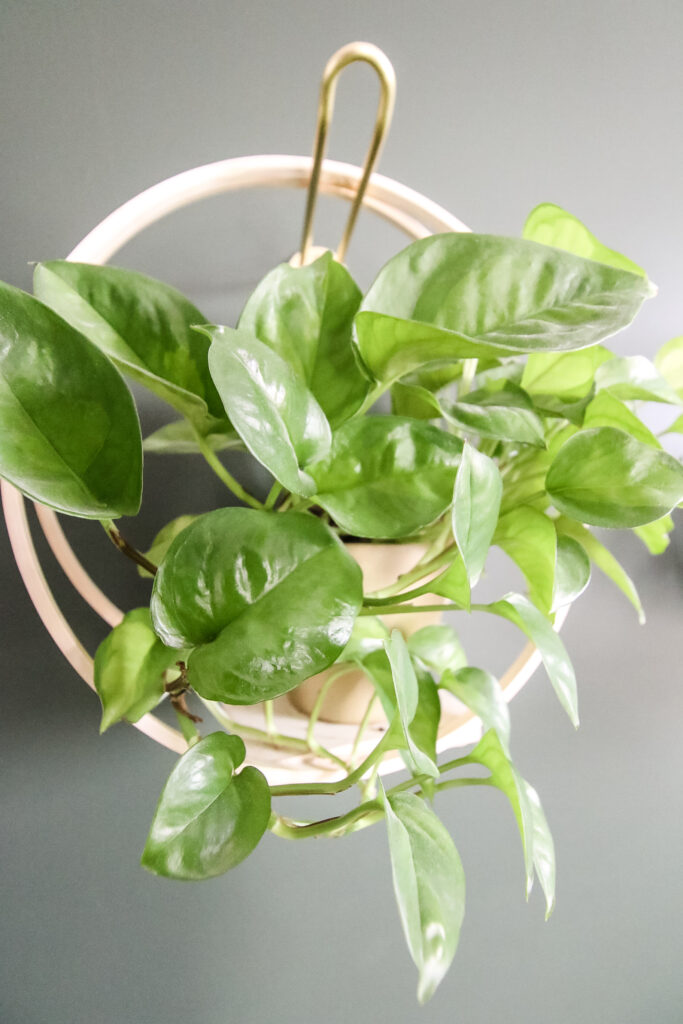
DIY Pothos Soil Mix Recipes
As you get more interested in an confident with your houseplants, it can be fun to go the extra mile and do things like mix your own potting mix for your plants.
If you want to make your own potting mix for pothos and other houseplants, here are 3 popular recipes!
DIY Pothos Soil Mix Recipe 1: Standard All-Purpose Mix
This recipe is suitable for general pothos care and can be adapted for various environments.
Ingredients:
- 2 parts Peat Moss
- 1 part Perlite
- 1 part Coconut Coir
- 1 part Well-Decayed Compost or Worm Castings (for nutrients)
Instructions:
- In a large container, combine peat moss, perlite, coconut coir, and well-decayed compost or worm castings in the specified ratios.
- Thoroughly mix the ingredients until the blend is uniform.
- Adjust the moisture level: Add water gradually while mixing until the soil is evenly moist but not waterlogged.
- Test the drainage by squeezing a handful of the mix. It should hold its shape briefly before breaking apart.
- Your standard all-purpose pothos soil mix is ready to use.
Variations:
- For Humid Regions (Improved Drainage): Add an extra part of perlite or coarse sand to enhance drainage and prevent waterlogging in humid environments.
DIY Pothos Soil Mix Recipe 2: Organic and Nutrient-Rich Mix
This recipe focuses on organic ingredients and additional nutrients, ideal for organic gardening.
Ingredients:
- 2 parts Peat Moss
- 1 part Coconut Coir
- 1 part Perlite
- 1 part Vermicompost (rich in organic nutrients)
- ½ part Well-Decayed Leaf Mold or Garden Compost
Instructions:
- Combine peat moss, coconut coir, perlite, vermicompost, and well-decayed leaf mold or garden compost in the specified ratios in a large container.
- Mix the ingredients thoroughly to create a well-blended, nutrient-rich potting mix.
- Adjust the moisture content by adding water until the mix is moist but not overly wet.
- Perform the squeeze test to ensure proper drainage; the mix should hold its shape briefly and crumble apart easily.
- Your organic, nutrient-rich pothos soil mix is ready for use.
Variations:
- For Arid Environments (Improved Moisture Retention): Increase the proportion of coconut coir to enhance the mix's moisture retention, ensuring the soil stays adequately moist in dry climates.
DIY Pothos Soil Mix Recipe 3: Lightweight and Well-Draining Mi
This recipe prioritizes a lightweight mix with excellent drainage.
Ingredients:
- 1 part Peat Moss
- 1 part Perlite
- 1 part Pine Bark Fines (or Orchid Bark)
- 1 part Vermiculite
Instructions:
- Combine peat moss, perlite, pine bark fines, and vermiculite in equal parts in a large container.
- Mix the ingredients thoroughly, ensuring an even distribution of components.
- Adjust the moisture level by adding water gradually while mixing until the soil is uniformly moist.
- Conduct the squeeze test to confirm proper drainage; the mix should hold its shape momentarily and then crumble easily.
- Your lightweight, well-draining pothos soil mix is prepared for potting.
Variations:
- For Indoor Container Gardening: Add a handful of activated charcoal to the mix to help absorb odors and maintain soil freshness in indoor settings.
These DIY pothos soil mix recipes can be adjusted based on your specific needs, ensuring your pothos plants thrive in their respective environments.
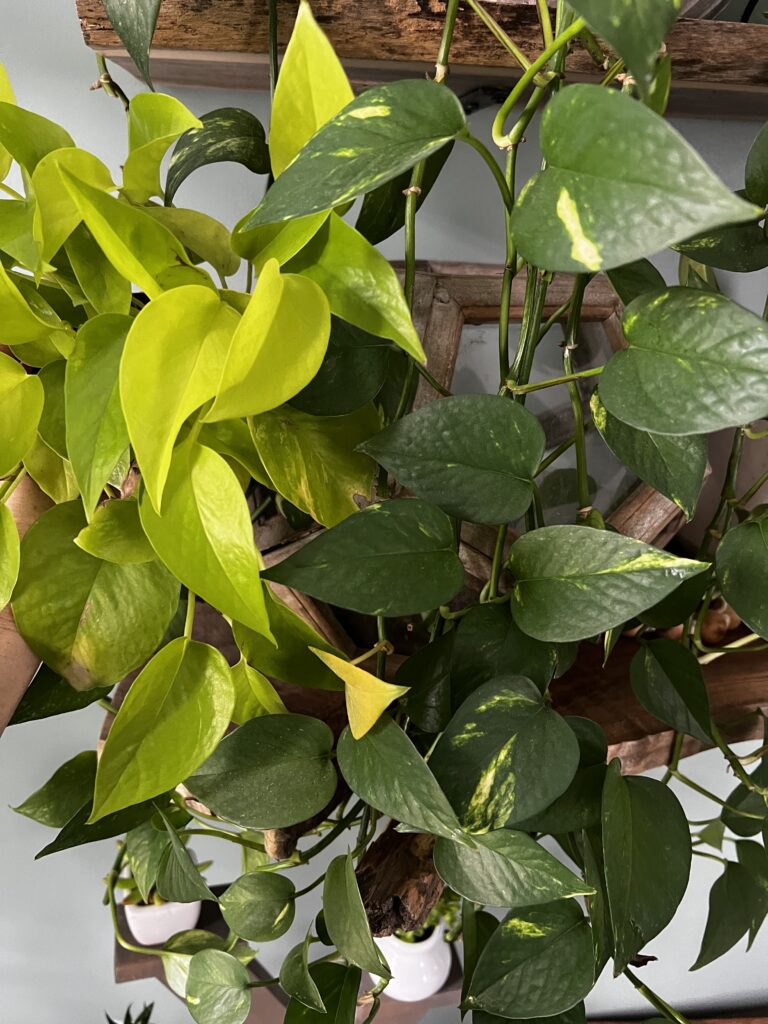
Commercial Pothos Soil Mix Options
Don't want to make your own potting mix? Totally understandable! There are plenty of reputable commercial potting mixes suitable for pothos available in the market.
Here's a comparison of some popular brands, highlighting their features, advantages, and potential drawbacks to assist readers in making informed purchasing decisions:
Miracle-Gro Indoor Potting Mix
This soil has balanced nutrient content that supports healthy plant growth. The lightweight texture encourages root development.
It is enriched with plant food for nourishment, contains coconut coir for moisture retention, and is a well-draining formula with added perlite for aeration.
However, some users find it may dry out quickly, requiring more frequent watering.
Recommendation: Ideal for beginners and those looking for a convenient, pre-fertilized mix; suited for pothos and other indoor plants.
Fox Farm Ocean Forest Potting Soil
This soil is a blend of earthworm castings, bat guano, and Pacific Northwest sea-going fish and crab meal. It is pH adjusted for optimal plant nutrition. It's a great, well-aerated mix with perlite and sand.
It is both rich in organic nutrients, promoting robust plant growth, and has excellent moisture retention and drainage properties.
However, it is pricier compared to some other options on the market.
Recommendation: Recommended for experienced gardeners and enthusiasts seeking a premium organic mix for high-performance indoor gardening.
Espoma Organic Potting Mix
This soil mix is all-natural and organic ingredients, including peat moss, perlite, and humus. It is enhanced with myco-tone, a proprietary blend of mycorrhizal fungi. It contains beneficial microbes for soil health!
This option is environmentally friendly and free from synthetic chemicals. It encourages root growth and enhances nutrient absorption.
However, some users find it may need additional fertilization over time.
Recommendation: Ideal for eco-conscious gardeners looking for an organic mix; suitable for various indoor plants, including pothos.
Black Gold All Organic Potting Soil
This soil is a blend of Canadian sphagnum peat moss, compost, perlite, and pumice. It is enriched with organic fertilizers and is a well-draining and lightweight formula.
It provides excellent aeration and drainage for healthy root development and contains natural ingredients for balanced plant nutrition.
Some users may find it requires additional perlite for increased drainage in certain situations.
Recommendation: Suitable for a variety of indoor plants, offering a good balance between affordability and quality; can be enhanced with extra perlite for specific plant needs.
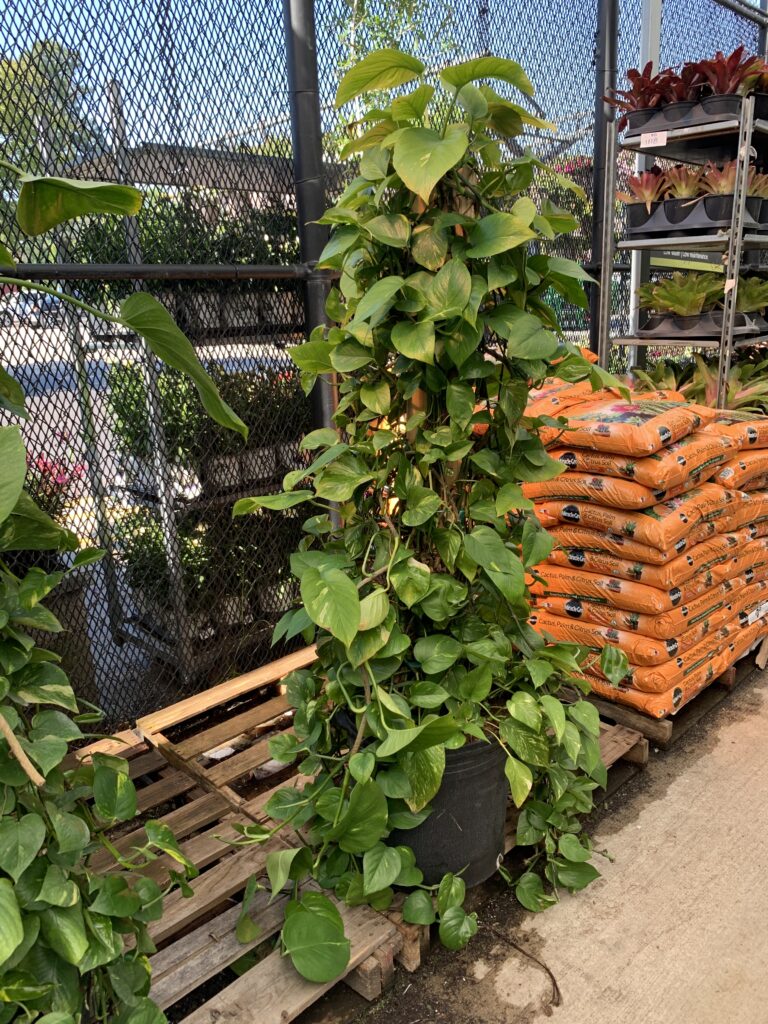
Tips for Repotting Pothos
Here are some tips for repotting your pothos plant with fresh soil!
- Know the right time to repot, typically when the plant outgrows its current container or when you notice signs of root congestion.
- Carefully inspect the roots for signs of overcrowding, such as roots circling the pot or emerging from drainage holes.
- Healthy roots are typically white or light tan, while rotting roots may appear dark, mushy, or foul-smelling.
- Select a new pot that is 1-2 inches larger in diameter than the current pot.
- Ensure the new pot has drainage holes to prevent waterlogging and promote proper aeration.
- Prepare the new potting mix, ensuring it's well-draining and rich in nutrients.
- Gently remove the pothos from its old pot, being careful not to damage the roots.
- Place the plant in the center of the new pot and fill in the gaps with fresh soil mix, pressing lightly to remove air pockets.
- Water the plant thoroughly and allow excess water to drain out, ensuring the soil settles around the roots.
Other pothos content you might enjoy:
- Golden pothos care guide
- Cebu Blue pothos care guide
- Baltic Blue pothos care guide
- Marble Queen pothos care guide
- Global Green pothos care guide
- Neon pothos care guide
- NJoy Pothos Care Guide
- Why are my pothos leaves turning yellow?
- Why are my pothos leaves turning brown?
- Why is my pothos plant not growing leaves?
- Why are my pothos cuttings rotting
- How to move pothos from water to soil
- Should I mist my pothos?
- How to make pothos fuller
- Can you propagate pothos without a leaf?
- Can you propagate pothos from a leaf?
- Can you propagate a long pothos vine?
- Where to cut pothos for propagation
- Pothos vs Snake plants: which is better for beginners?
- Cebu Blue Pothos vs Baltic Blue Pothos
- How to propagate pothos
- How to propagate golden pothos
- How to propagate a satin pothos
- How to propagate pothos in soil
- How often to water pothos plants
- How to care for variegated pothos
- How to revive a dying pothos plant
- Why are my Pothos leaves curling?
- How to identify and treat common pothos pests
- How to divide pothos plant
- How to make pothos grow bigger leaves
- Why does my pothos only have one vine?
- Can you grow pothos in low light conditions?
- How to cut off dead pothos leaves
- Are pothos plants toxic to cats and dogs?
- Can you grow pothos in water?
- Why is my pothos droopy?
- Why is my pothos plant dropping leaves?
Printable Pothos Plant Care Guide
Join the (free!) KeepYourPlantsAlive+ community to access this exclusive printable plant care guide! Or keep scrolling for more!

Thanks for reading!


Hey there, I'm Morgan, a houseplant enthusiast from sunny Charleston, South Carolina. Growing up surrounded by my mom's lush orchids and African violets, I discovered the magic of bringing nature indoors. Thanks to the pandemic, I delved deeper into houseplants, discovering their power to uplift moods and transform spaces. I'm here to spill all my secrets, helping you pick the perfect houseplant - and make it happy. Let's keep your plants alive, together! 😊


